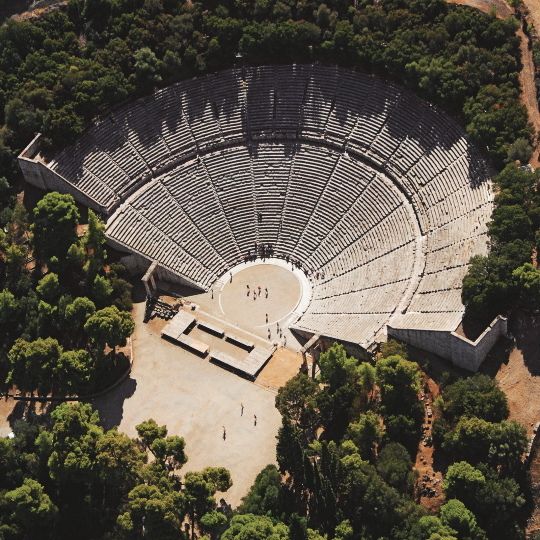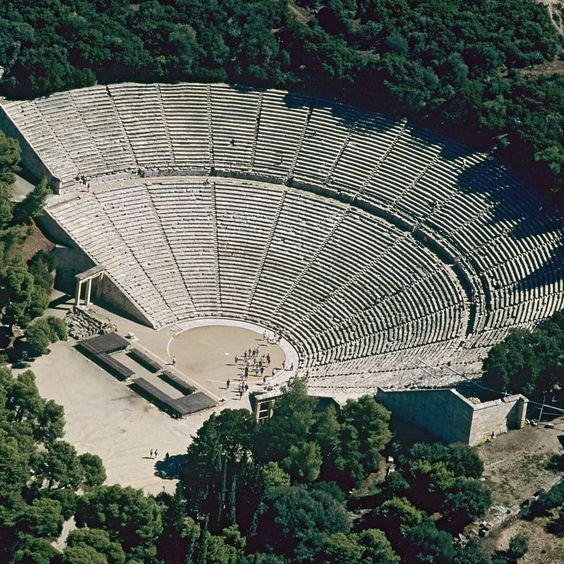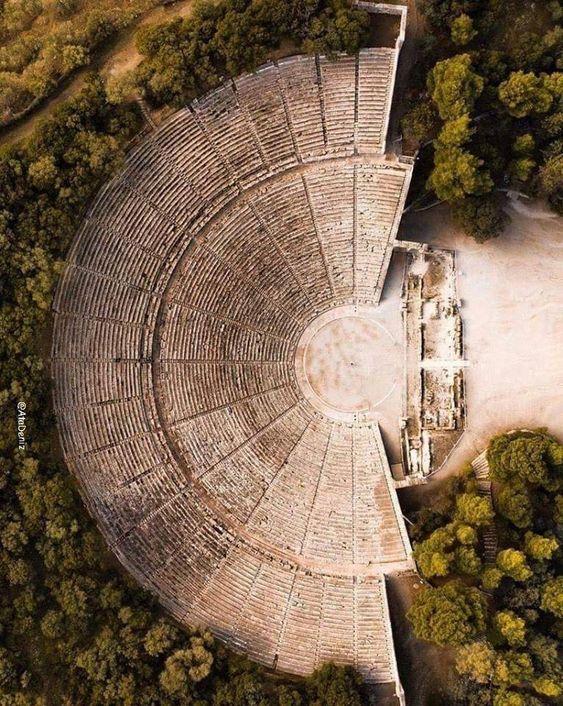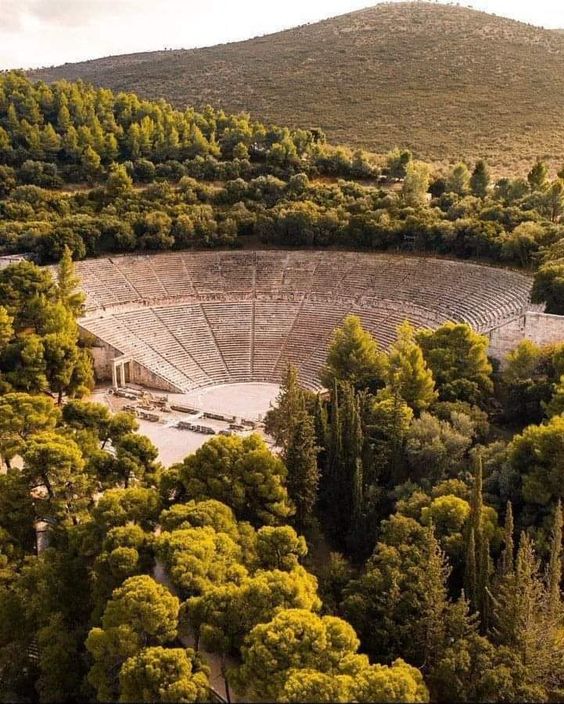The OG of Theatres
If there’s one spot in Greece where history, art, and impressive engineering collide, it’s the Theatre of Epidaurus. Tucked away in the lush Peloponnese countryside on a natural slope of a hillside, the Theatre of Epidaurus is the epitome of ancient Greek architecture. Constructed way back in the 4th century BC, by the architect Polykleitos the Younger, it could pack in around 14,000 spectators.
Built using local limestone and marble, the seating area, or "cavea," was carved directly into the hillside, with stone seats arranged in a semi-circular pattern. The stage area, known as the "orchestra," was circular and made from carefully laid stone blocks. The design is all perfect symmetry and proportion. The theatre’s dimensions follow strict geometric principles. The acoustics are so spot-on, that if you drop a pin in the center of the stage, someone way up in the nosebleeds can hear it. It’s that good.
But there’s more to the Theatre of Epidaurus than just cool engineering. It’s part of a larger sanctuary dedicated to Asclepius, the god of medicine. Back in the day, people didn’t just come to catch a play; they came to be healed—because theatre was seen as a form of therapy. And honestly, after sitting under the stars in this magical setting, you might start to believe in its healing vibes too.
Every summer, the Epidaurus Festival takes over, and you can catch ancient Greek tragedies performed just like they were in the old days. Imagine watching Oedipus Rex or Medea in the very place where these stories were first told— talk about stepping back in time.
*All images & copyright belong to the original owner unless otherwise stated*
Built using local limestone and marble, the seating area, or "cavea," was carved directly into the hillside, with stone seats arranged in a semi-circular pattern. The stage area, known as the "orchestra," was circular and made from carefully laid stone blocks. The design is all perfect symmetry and proportion. The theatre’s dimensions follow strict geometric principles. The acoustics are so spot-on, that if you drop a pin in the center of the stage, someone way up in the nosebleeds can hear it. It’s that good.
But there’s more to the Theatre of Epidaurus than just cool engineering. It’s part of a larger sanctuary dedicated to Asclepius, the god of medicine. Back in the day, people didn’t just come to catch a play; they came to be healed—because theatre was seen as a form of therapy. And honestly, after sitting under the stars in this magical setting, you might start to believe in its healing vibes too.
Every summer, the Epidaurus Festival takes over, and you can catch ancient Greek tragedies performed just like they were in the old days. Imagine watching Oedipus Rex or Medea in the very place where these stories were first told— talk about stepping back in time.
*All images & copyright belong to the original owner unless otherwise stated*



